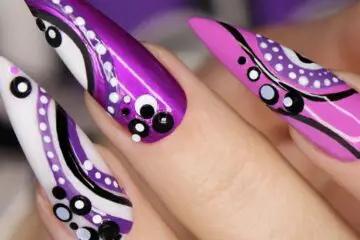You might be scratching your head wondering if it’s possible to replace your drill with a nail file. After all, they both sound like they could do the trick…right? Well, we’re here to set the record straight and answer this age-old question once and for all: Can you use a nail file instead of a drill? Read on to find out!
Can You Swap a Emery Board for a Nail Drill?
The short answer is, unfortunately, no. While a nail file can help you buff up your nails and make them look their best, it’s not powerful enough to take on the tough jobs that require drilling. Nail files are great for precision work like removing ridges in the nails or creating intricate designs, but when it comes to bigger projects, you’ll need a drill.
How do you know when to use which tool?
It can be confusing trying to figure out when to use a nail file versus a drill, but the difference is quite simple. A nail file is best used for precision work like shaping nails. They come in various shapes and sizes, making them perfect for getting into tight spots and giving you more control over your manicure. As long as you’re not dealing with anything too tough, a nail file should do the trick!
On the other hand, a drill is better suited for bigger jobs that require more power. Drills are great for removing acrylics from nails, drilling down through gel polish and plastic nails, and sanding down any imperfections in the surface of your artificial tips. While they can also be used to create intricate designs, they are more powerful than a nail file and should be used with caution.

When should I use the nail file?
Nail files are essential for any manicure, whether it’s a fresh set of acrylics or just shaping up your natural nails. They come in various shapes and sizes, making them perfect for getting into tight spots and giving you more control over your manicure.
Is it okay to use a nail file on hard surfaces?
It’s not advised to use a nail file on hard surfaces. Nail files are intended for soft and delicate surfaces.
What can I use as a substitute for an emery board?
If you don’t have a nail file handy, there are other tools that can do the trick. A metal file or an abrasive block can be used to shape and buff nails, while an orange stick will work great for reducing ridges. Of course, none of these tools will give you the precision that a nail file does, so it’s best to use them only when absolutely necessary.
Are an emery board and a nail file the same thing?
Nail files and emery boards are actually two different tools. Nail files are made of metal or plastic and have a finer grit than an emery board, which is usually made of cardboard with abrasive material on one side. Emery boards can be used to buff nails but they’re not great for precision work like filing the shape of your nails or creating intricate designs. For that, you’ll need a nail file.
When should I replace my emery board?
An emery board should be replaced every three to four weeks, or whenever it starts to feel rough. Over time, the abrasive material on an emery board can lose its effectiveness and may even cause damage to your nails if used for too long. It’s best to replace it regularly so you can maintain a smooth surface on your nails.
Do I really need a nail drill?
Yes, a nail drill is an essential tool for any manicurist. It’s used to remove acrylics from nails and sand down plastic tips, as well as create intricate designs that would be impossible with a nail file.While they can be expensive and intimidating at first, it’ll pay off in the long run if you want to take your skills to the next level. So if you’re serious about doing professional-level manicures and pedicures, then investing in a good quality nail drill is definitely worth it.
Which type of nail file is best?
The type of nail file you use depends on the job at hand. If you’re working with natural nails, then a soft-grit nail file made of metal or plastic will be your best bet. For artificial tips and sculpting intricate designs, then a medium- to fine-grit nail file made of glass or crystal is ideal.
What is a 180 grit nail file used for?
A 180 grit nail file is best for filing nails and removing ridges. It’s not as aggressive as a 100 or 120 grit file, so it won’t cause any damage to the nail bed. This type of file should be used with caution, however – too much pressure can still cause your nails to become brittle and weak.
What is a 240 grit nail file used for?
A 240 grit nail file is the best choice for shaping and buffing nails. It’s less abrasive than a 180 grit file and will leave your nails feeling smooth. It can also be used to create intricate designs, such as abstract lines and geometric shapes. The finer the grit, the more precise the details you can achieve. As with any nail file, it’s important to use light pressure and move in one direction.
Conclusion | Can you use a nail file instead of a drill?
This article provides an overview of the different types of nail files and their uses. It explains that while a nail file cannot replace a drill, it is still an important tool for creating intricate designs and buffing nails. It also highlights the importance of replacing emery boards regularly, and suggests investing in a nail drill if you’re looking to take your manicure skills to the next level. Finally, it looks at the different grit levels of nail files and what they are best used for. Overall, this article provides helpful guidance on selecting and using the right tools for any manicure job.


